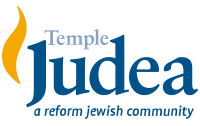Labor Day
In today's world, Labor Day typically means a day off from work or school, invitations to backyard BBQs, and retail sales events. But 129 years ago, when Congress declared it a national holiday, it was to recognize the contributions of laborers and the injustices they faced. How does this history relate to our Jewish community? The imperative for justice is a very Jewish notion. Social justice is an essential theme of our tradition, so it’s no wonder there is a tightly woven connection between Jewish Americans and the labor movement. Jewish labor unions - like the United Hebrew Trades - created significant improvements in the lives of Jewish and other workers. Interestingly, Yiddish was the language that was used to recruit thousands of Jewish immigrant workers to the unions. Perhaps the most well-known Jewish labor union leader was Samuel Gompers, who helped found the American Federation of Labor in the 1880s. The AFL-CIO (as it’s known today), credits Gompers with creating an influential and abiding workers' alliance dedicated to the mutual benefit of all workers. So while we naturally hope you enjoy the 3-day weekend, remember some of the victories that our Jewish predecessors helped win for us, and all Americans: the 8-hour workday, workplace safety laws, and the elimination of child labor. We hope you have a meaningful (Jewish?) Labor Day!






